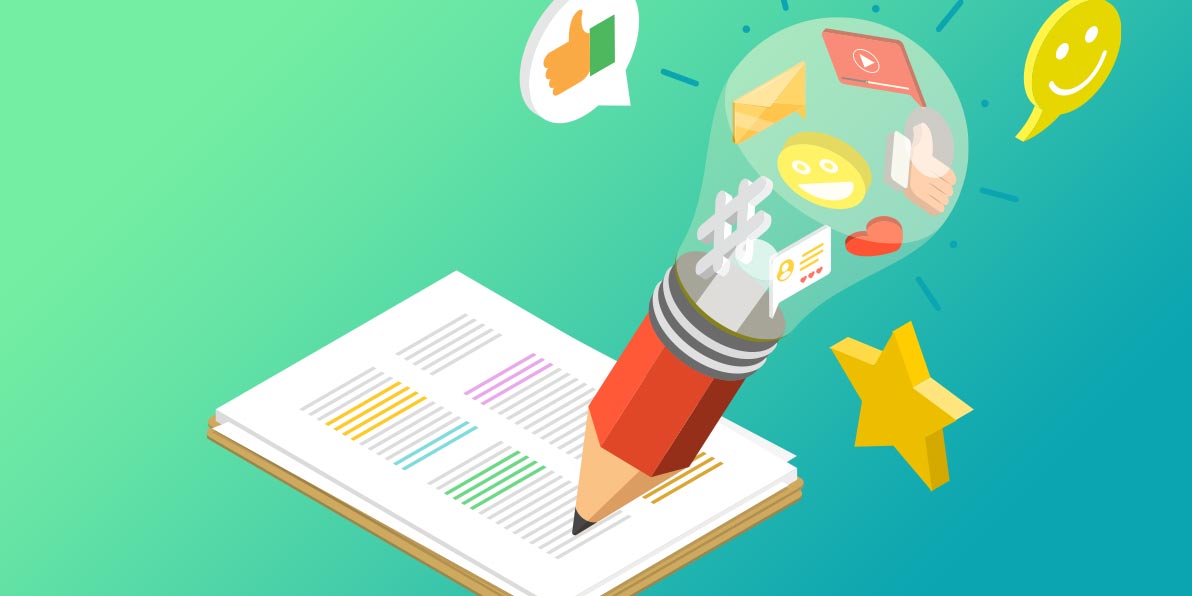ChatGPT: An Asset for Blog Outlines, Intros & Rewording

Writers and marketers are all abuzz about ChatGPT and other AI-powered applications. While some have become enthusiastic ambassadors of such technology, other concerned folks are wondering whether these language learning models (LLMs) will replace content developers altogether.
Now, there’s a long history of professionals expressing similar sentiments whenever new technologies have been introduced. And the future is uncertain, of course. But this writer is inclined to view ChatGPT as another powerful tool to help me work smarter, faster, and amplify my abilities.
Here are just a few specific ways I’ve already employed ChatGPT to enhance my workflow as an inbound content developer.
Generate Outlines
ChatGPT can be an incredible tool for creating outlines, but its utility really depends on how much context and how many specifics you feed it. Here’s my process:
1. Determine the topic:
This could be a blog post, article, or any other written content. It’s best if you pin down the title, informed by SEO research, and then identify a few questions you’d like answered.
2. Provide context:
Give ChatGPT background about your topic. This could include any relevant information or specific points you want to cover in your outline. Hyperlinking to blogs you’ve already written can guide ChatGPT toward the word choice and topical elements you want featured.
Including key terms and language informed by a branding guide can be very beneficial and save you from having to add language later.
3. Use specific prompts:
Employ detailed prompts to help ChatGPT generate a thorough outline. Again, the more info you give ChatGPT, the happier you’ll be with its result.
For example, you might tell ChatGPT, “Use these links to draft an outline for a blog titled ‘The Benefits of Embracing ESG (environmental, social, governance) as a Small B2B Business,’ explaining what ESG is, why it’s important, how it can benefit small B2B businesses, and why it’s morally important for businesses to be more sustainable.”
4. Review and refine:
Once ChatGPT generates an outline, review it to ensure that it covers all the main points. Refine the outline as needed, adding or removing sections to ensure that it meets your needs.
For instance, you might tell it, “Rewrite this draft, but add a section on greenwashing and how to identify organizations that use ESG unethically.”
5. Use the outline to write your content:
Now, get busy writing your content. You can follow the outline closely or use it as a starting point—obviously, it’s up to you. Remember, you’re the writer, and while ChatGPT is a helpful tool, you’re the one who has to think strategically, provide context, add creative flourishes, and inject the tone appropriate to your brand.
And, if you're a content developer worth your weight in ink, you’ll go through the outline and find ways to effectively integrate links to other blog posts you’ve already written. This is a part of SEO strategy that ChatGPT still doesn’t understand or replicate well. After all, it’s a language learning model, not a writer or marketer who has dedicated years to developing its craft. It’s on you to make your writing not only sing, but rank high in search engines.
Overall Thoughts
Using ChatGPT to generate an outline can be a great tool if you need help getting started. By providing additional context, using specific prompts, and refining the results, ChatGPT can generate a rather detailed outline.
Even if you don’t use the generated outline, it can trigger thoughts on how you’d actually like to organize your draft. In this way, ChatGPT can be a great brainstorming partner—another handy benefit for those of us who work remotely and don’t have a teammate nearby, or are a bit Zoomed out.
Improve Blog Structure
As you can see, it’s pretty easy to ask ChatGPT for help in creating an outline. But, it can also help you improve overall blog structure, if you already have an outline. You can provide ChatGPT with your main topic, and it will suggest subsections and supporting ideas that will help you structure your post effectively.
Here are a few specific things I’ve found ChatGPT can do for blog post structure:
- Transitioning: Suggest transitional sentences or paragraphs that can help you move smoothly from one topic to the next. This can improve the flow and readability of your blog post.
- Paragraphing: Provide tips on how to break your blog post into paragraphs. It can recommend where to start and end each paragraph, and how to group related ideas together.
- Sequencing: Help you organize your ideas into a logical order. It can suggest the order in which to present your ideas, based on their importance, relevance, or chronology.
For example, when you ask ChatGPT to “restructure this blog post into a more logical order,” and paste the text of your initial draft, you’ll receive an outline detailing a new way to organize your post, down to the section, with bullet-pointed ideas or concepts. - Summarizing: Assist with writing a compelling introduction and conclusion. It can suggest how to summarize your main points effectively and leave your readers with a strong impression.
Jumpstart Your Intro or Conclusion
Every writer develops their own process. Some content developers draft the body of a blog before writing the introduction or conclusion. Personally, the intro is the last thing I write because I tend to be a bit more freewheeling within the body of a blog post, which I compose in a flurry of researching and drafting simultaneously.
Penning an intro beforehand can be stifling or inhibiting for me as a writer, a sentiment I’ve had other writers express, as well. Additionally, you can lose a bit of steam by the time you are near the end of a blog draft (think of those late afternoons when a deadline is near). ChatGPT helps with that in a few ways.
You can paste the body of your blog post into ChatGPT and ask for it to “use this text to write an introduction.” Naturally, you can request it do the same with a conclusion.
Notably, these generated introductions and conclusions always require a bit of additional wordsmithing, especially if you want a punchier beginning, or need to integrate some strategic content near the end, such as a call to action.
Alternatively, you can ask ChatGPT to create an intro or conclusion based on an outline you submit or even a mere blog title, but keep in mind that the less info you give to ChatGPT, the more frustrating, generic, or irrelevant a response you’ll receive.
You’re still the writer, but these generated responses can help spur new ideas as you work to put the finishing touches on your blog draft.
Reword Definitions, Paragraphs, or Oft-Used Content
After you’ve written content about a given subject matter for a long period of time, it’s difficult not to slip into the same language. Well-worn paths are the most comfortable. It’s especially challenging when you regularly revisit similar concepts or terms. And, let’s be honest, writing the same thing over and over can become tiresome. And your writing can become cliche.
This is where you can use old copy to your advantage.
When elucidating a familiar concept or covering similar territory for a new blog, you can save time by pasting your previously written content into ChatGPT and asking for it to be rewritten. But keep in mind that ChatGPT’s language tends to be a bit formulaic and transactional because it is designed to generate text based on patterns in large amounts of training data.
This training data is based on a wide range of sources, including books, articles, and other written material, which can include more formal or technical language. As a result, the language generated by ChatGPT can reflect the patterns and structures found in the training data, which most of us perceive as numbingly detached and very computational.
Put simply, it’s meant to be generic and sound neutral, because it’s an amalgamation of averages, more or less.
Additionally, ChatGPT is programmed to prioritize accuracy and coherence in its responses, which can also contribute to its stilted style. To ensure that its responses are accurate and logically consistent, ChatGPT may rely on certain patterns or structures that are commonly used in written language, even if they are repetitive.
However, it is important to note that ChatGPT's language can vary widely depending on the input it receives and the context in which it is used. See what happens when you prompt it to rewrite your blog draft in the style of a famous novelist. For instance, “reword this in the style of John Irving.”
By providing more varied and expressive input, and by training on a more diverse range of data, it is possible to generate language that is less formulaic and more expressive.
Fortunately, when you feed it language you’ve already written, you're helping guide it toward how you want it to compose responses. Plus, definitions and brief explanations of concepts are fantastic candidates for being rewritten by ChatGPT.
A tip: When drafting a command, I’ve found more success with telling ChatGPT to “reword” rather than “rewrite” a copy-and-pasted selection of text. Including word lengths can also be an effective way to introduce new language or content.
Responses will still take some minor massaging, but these rewrites spat out by ChatGPT can save you time, and, on occasion, introduce new vocabulary and sentence structures to your writing repertoire.
Edit & Proofread Content
Lastly, I’ve had others mention using ChatGPT as a grammar tool for editing and proofreading. ChatGPT can check for grammar and spelling errors and provide suggestions on how to improve the readability of your content.
But how does ChatGPT compare with other grammar tools such as Grammarly or the automated grammar checker in Google Docs?
ChatGPT and Grammarly, for instance, are both powerful tools for checking grammar, but they use different approaches and have their own strengths and weaknesses.
ChatGPT is a language model that has been trained on a massive amount of text data, and it can analyze text for grammar and syntax errors. However, its primary purpose is not to serve as a grammar checker. ChatGPT is more of a conversational AI that can generate human-like responses to prompts and questions. While it can catch some grammatical errors, it may not be as effective as Grammarly or other applications.
An application like Grammarly, however, is a dedicated grammar checker that uses artificial intelligence and natural language processing to analyze text for grammar, spelling, punctuation, and style issues. I’ve found Grammarly can provide detailed feedback on sentence structure, word choice, and writing style, making it an excellent tool for writers looking to improve their writing skills.
I’ve used Grammarly through the years, and have seen my writing errors diminish dramatically, and I would definitely recommend it to any content writer or marketer. While ChatGPT can catch some grammar errors, Grammarly is a more specialized and effective tool for checking grammar and improving writing quality.
Identify Ways to Improve a Draft
On a related note, I have found ChatGPT also gives some great feedback when you copy and paste your draft and ask, “How can I improve this blog post?” And it does so with kindness, at times!
For instance, ChatGPT gave me this assessment for an earlier draft of this blog:
“The blog post titled ‘ChatGPT: An Asset for Blog Outlines, Intros, & Rewording’ introduces ChatGPT as an AI-powered language learning model that can help content developers create outlines, intros, and outros, and reword previously written content. The author shares their experience of using ChatGPT and suggests ways to improve its output. However, the post lacks depth and clarity in its explanation of ChatGPT's abilities and limitations, and how to use it effectively.
To improve this blog post, the author could discuss the limitations of ChatGPT and how to work around them. For example, they could note that ChatGPT struggles with context and may generate irrelevant or inaccurate responses if not given enough information. They could also mention that ChatGPT does not understand SEO or other marketing strategies and may need additional guidance to optimize content for search engines. By acknowledging these limitations and offering solutions, the author can help readers use ChatGPT more effectively.”
Its response included several other ways I could improve my draft, each surprisingly helpful (even though I didn’t end up integrating all of its recommendations).
It only takes a moment, and, honestly, it’s such a blessing to have an AI application capable of spotting glaring weaknesses before passing the draft along to the fastidious eyes of a supervisor or editor.
You're Still the Writer
Put simply, ChatGPT has emerged as an indispensable asset for content developers looking to expedite and improve their work.
The platform's ability to contextualize and personalize prompts ensures that it generates precise outlines that can help you structure a draft, compose introductions and conclusions, and even proofread. It also offers suggestions for transitional elements, paragraph breaks, and logical ordering that can elevate a blog post.
By leveraging ChatGPT, writers can create captivating introductions and conclusions that capture the reader's attention. It’s also important to understand ChatGPT’s limitations. While it is an exciting tool, it cannot replace the writer's creativity and strategic thinking (including ensuring content is accessible).
LLMs don’t have the lived experiences and human intelligence you bring to the writing process. In other words, they are without personal experiences and feelings, the raw materials and messy encounters necessary for creating compelling writing.
Ultimately, it’s on you to add dashes of flair and personality to AI-assisted writing, because those are the parts that will likely resonate the most with readers and boost your SEO efforts.


